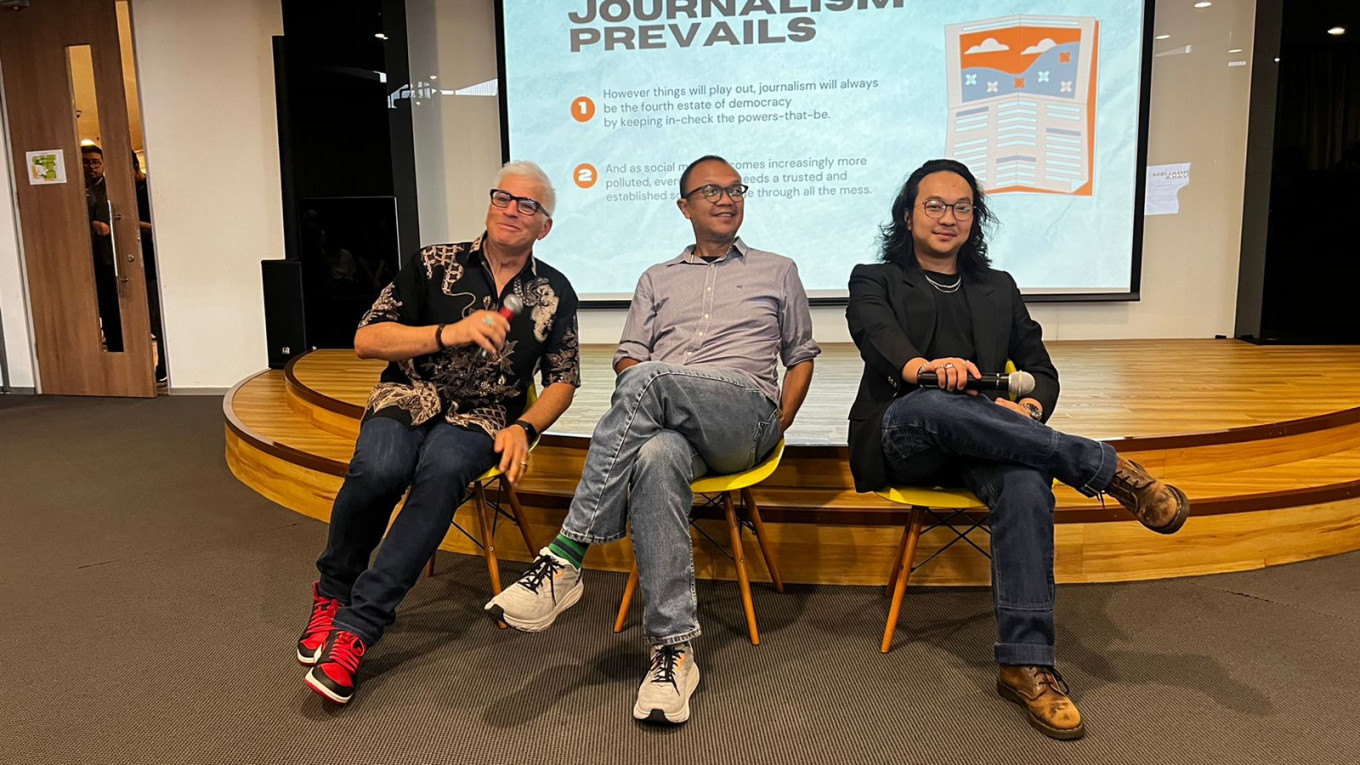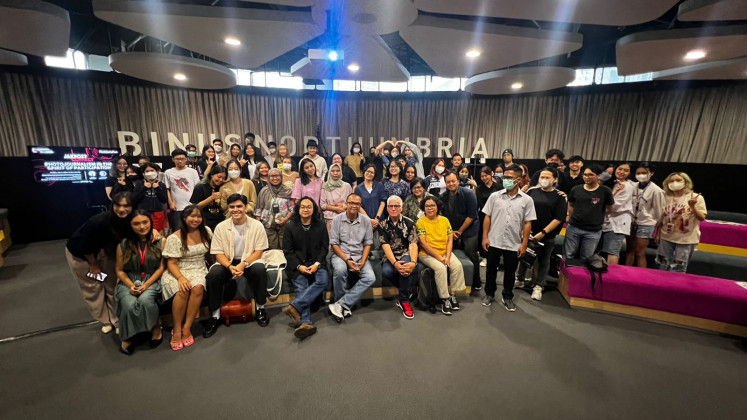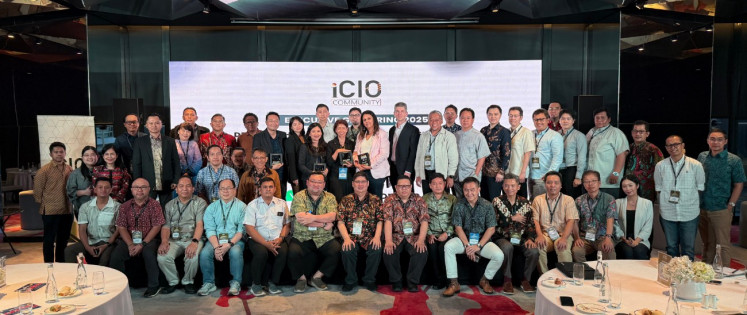Popular Reads
Top Results
Can't find what you're looking for?
View all search resultsPopular Reads
Top Results
Can't find what you're looking for?
View all search resultsCapturing the stories behind the lens with Photojournalism in the Spirit of Participation
Change text size
Gift Premium Articles
to Anyone
A photograph might just be one of the most compelling and persuasive mediums to capture the truth of a moment in history.
As author Susan Sontag once said, “the most grandiose result of the photographic enterprise is to give us a sense that we can hold the whole world in our heads.”
Taking place at the Binus International FX Sudirman Campus on Tuesday, The Jakarta Post in collaboration with PannaFoto Institute held a panel discussion with the theme Photojournalism in the Spirit of Participation.
Inviting Binus University students to explore the world through their lens, the discussion centered on how to capture universal humanity through photojournalism, with Ted Soqui, Dita Alangkara and Dio Suhenda as panelists.
Soqui, a prestigious self-taught photojournalist based in Los Angeles, the United States, has been published in renowned magazines such as Time, Newsweek, Rolling Stone and Paris Match. His repertoire includes harrowing contemporary social issues such as the Black Lives Matter movement, the COVID-19 pandemic and homelessness in the US.
“There were a few dangerous things, not obviously being hurt,” Soqui said when introducing his images from the Black Lives Matter movement, “There were lots of photographers who weren’t photojournalists doing this, and they had forced perspectives.”
Soqui’s presentation emphasized how threading a narration in his mind while capturing his photographs brought essentialism to audiences – a key to communication. This is what his distinctive black and white photographic style spoke to him.
“Black and white speaks to me as a narrative. [...] I always go back to black and white. I think you need to find your vision, you need experience – different cameras, different lenses. Always record everything, you need a workflow. If you don’t have a workflow, you should establish a workflow [...] definitely caption everything as much as you can,” he shared with the audience.
Ted inspired us to grab a little notebook, slip it in our pocket with a pen or two, hold onto our smartphone or favorite camera around our necks and welcome everyone into our world as we capture the moments of life.
Photography is as capacious as life itself.
Despite only coming into Indonesia in the 1840s, photography in the archipelago, explained author Brian Arnold, holds a unique place in the world of photography. Tracing its use from its invention to its present day, Brian shared how the medium has grown alongside the growth and change of the country.
Photography has evolved to be an essential peer of Indonesia’s independence, a voice for reformation, an agent for advocating democracy. Associated chief photographer for Indonesia at the Associated Press (AP) news agency, Dita Alangkara, brought light to just that.
“Photojournalism is all about storytelling, how to convey your ideas and tell your stories,” Dita said.
Speaking to the Post, Dita shared that there were moments in his photographic journey where he was confronted with life-or-death situations. This brought weight to his presentation where the audience was struck by his photos from the Aceh tsunami, of imprisoned individuals and various images that revealed the disheartening truths and injustice in Indonesia.
Credibility will always come into play, especially when photojournalists are confronted with groundbreaking historical moments that in turn become a moment of the voice of the generation, or even our nation. It is a two-way communication, Dita emphasized.
Hence, delicacy in truth needs to be maintained, as both subjects and spectators of photography become vulnerable in eliciting interpretations of truths.
“There is one rule in photojournalism,” Dita emphasized in his closing statement, “Don’t lie.”
Diving into today’s world of digital transformation and Gen-Z’s Twitter-influenced language we all love to throw around here and there, that within itself brings a whole new glossary of truths primarily when breaking news on social media.
This is what the Post’s senior reporter Dio Suhenda brought to light in his presentation on why journalism prevails – especially in the face of social media platforms.
“Citizen journalism is what I would like to call a fake news echo-chamber. Because once you misinterpret an incident, and then it spreads online, it becomes a wildfire. It becomes a new story that might start as, not fake necessarily, but misreported. But then everybody would believe it,” opened Dio, as he spoke of the lack of media literacy in Indonesia despite it having one of the most online-consuming populations in the world.
Dio’s presentation centered on the contemporary world, shedding light on issues such as the sustainability of journalism in the long term. And as emphasized by the 25-year-old senior journalist, technology should be embraced.
“Personally, for me, coming from [the perspective of] a journalist, I think we should embrace technology. [...] Technology is always changing and it’s impossible for us not to keep up,” added Dio. “It’s impossible for your lecturers to gate-keep you from ChatGpt. Technology is about change, and you should embrace it.”
The audience poses with speakers following the talk Photojournalism in the Spirit of Participation at Binus International FX Sudirman Campus in Jakarta on Tuesday. (Courtesy of TJP. 6/ June/2023/.)Closing the presentation, students were encouraged to join The Jakarta Post’s 40th Anniversary Photo Contest, which is open for submissions until June 20.
With the theme A Voice for All: Capturing the Spirit of Participation, the competition opens a space for students to engage in positive changes through local participation armed with only a camera.











